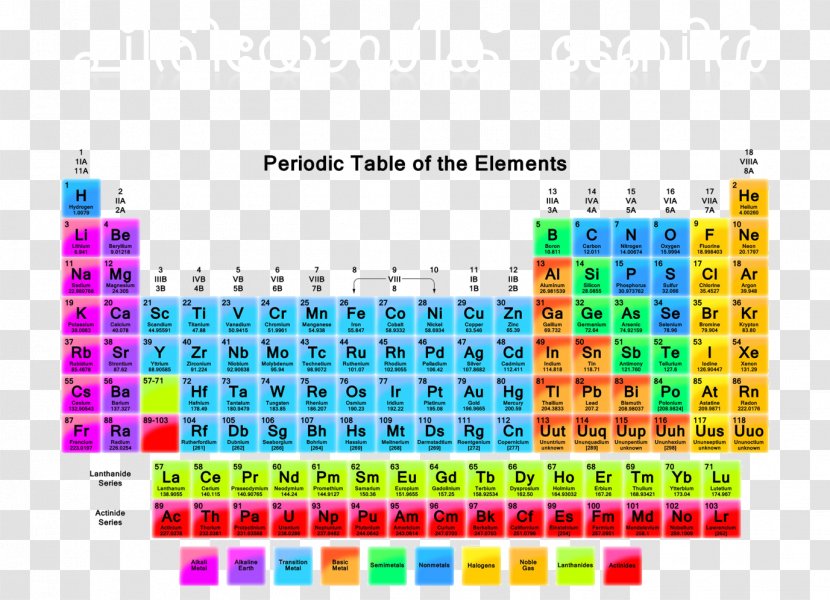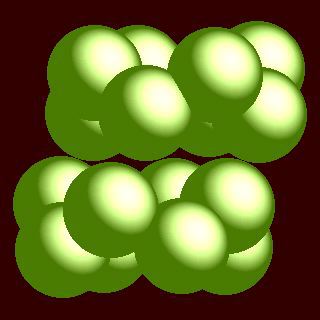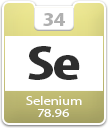Selenium is a metalloid with atomic number 34 (discovered in 1817 by J. Berzelius) that has been demonstrated to be essential for living organisms. From: Analytica Chimica Acta, 2013 Related terms. Atomic Number of Selenium Selenium is a chemical element with atomic number 34 which means there are 34 protons and 34 electrons in the atomic structure. The chemical symbol for Selenium is Se. The atom consist of a small but massive nucleus surrounded by a cloud of rapidly moving electrons. Atomic Number of Selenium is 34. Chemical symbol for Selenium is Se. Number of protons in Selenium is 34. Atomic weight of Selenium is 78.971 u or g/mol. Melting point of Selenium is 217 °C and its the boiling point is 685 °C. » Boiling Point » Melting Point » Abundant » State at STP » Discovery Year.
Atomic Number of Selenium is 34.
Chemical symbol for Selenium is Se. Number of protons in Selenium is 34. Atomic weight of Selenium is 78.971 u or g/mol. Melting point of Selenium is 217 °C and its the boiling point is 685 °C.
» Boiling Point» Melting Point» Abundant» State at STP» Discovery YearAbout Selenium
This chemical element can be found in two forms: a red color powder or light grey color metal. Selenium has a beautiful name coming after the Greek name for the Moon. This element is vital for living creatures and things, but just in micro doses, and in excess doses it can cause cancer or serious intoxication. Selenium in its pure form can not be found on the surface of our planet, but it exists in some rare minerals and special muds. The most important use of this chemical element is in glass production. It can be also added as catalyst and as electricity convertor in rectifiers.
Properties of Selenium Element
| Atomic Number (Z) | 34 |
|---|---|
| Atomic Symbol | Se |
| Group | 16 |
| Period | 4 |
| Atomic Weight | 78.971 u |
| Density | 4.809 g/cm3 |
| Melting Point (K) | 453 K |
| Melting Point (℃) | 217 °C |
| Boiling Point (K) | 958 K |
| Boiling Point (℃) | 685 °C |
| Heat Capacity | 0.321 J/g · K |
| Abundance | 0.05 mg/kg |
| State at STP | Solid |
| Occurrence | Primordial |
| Description | Non-metal |
| Electronegativity (Pauling) χ | 2.55 |
| Ionization Energy (eV) | 9.75238 |
| Atomic Radius | 115pm |
| Covalent Radius | 116pm |
| Van der Waals Radius | 190 |
| Valence Electrons | 6 |
| Year of Discovery | 1817 |
| Discoverer | Berzelius |
What is the Boiling Point of Selenium?
Selenium boiling point is 685 °C. Boiling point of Selenium in Kelvin is 958 K.
What is the Melting Point of Selenium?
Selenium melting point is 217 °C. Melting point of Selenium in Kelvin is 453 K.

How Abundant is Selenium?
Abundant value of Selenium is 0.05 mg/kg.
What is the State of Selenium at Standard Temperature and Pressure (STP)?
State of Selenium is Solid at standard temperature and pressure at 0℃ and one atmosphere pressure.
When was Selenium Discovered?

Selenium Element Chemical Series
Selenium was discovered in 1817.
Selenium is a non-metal and was discovered in 1817. It has been widely used in electronic devices. It is toxic in high amount but is an essential micronutrient for all living things.
History and Discovery

Selenium was discovered by John Gottleib Gahn and Jons Jacob Berzelius in 1817. He observed that the novel element greatly resembled in various properties to the previously discovered element, tellurium. The name selenium has been derived from a Greek word selene that means moon [1]. Download free wma to wav audio converterbackstage. In early days selenium was widely used in making electronic devices and in 1930s it was used to make rectifiers and replaced the use of copper oxide in conventional rectifiers. Later it was identified as a hazardous element as industrial workers showed signs of selenium toxicity.
Selenium
| Periodic Table Classification | Group 16 Period 4 |
|---|---|
| State at 20C | Solid |
| Color | Black, red, and gray |
| Electron Configuration | [Ar] 3d10 4s2 4p4 |
| Electron Number | 34 |
| Proton Number | 34 |
| Electron Shell | 2, 8, 18, 6 |
| Density | 4.79 g.cm-3 at 20°C |
| Atomic number | 34 |
| Atomic Mass | 78.96 g.mol -1 |
| Electronegativity according to Pauling | 2.55 |
Occurrence
Selenium is not an abundant element. Selenium is not commonly found in its free or elemental form. it exists in the form of ores and minerals. The most common ore of selenium are the sulfide ores. In mineral form, selenium is present in the form of selenite or selenide compounds. Selenium is also found in amino acids in living organisms, where it exists in the form of seleno-methionine, and selenocysteine [2]. High amount of selenium is also present in oceans [3]. In the human body, selenium content ranges between 13-20 milligram [4].
Physical Characteristics
Selenium is a non-metal and is sometimes considered as a metalloid. There are various allotropic forms of selenium, that interconvert into each other with varying temperature. Selenium exists in an amorphous powder form in chemical reactions. And when subjected to rapid melting, selenium acquires a black glass like allotropic form. Black selenium is converted to grey selenium when temperature is increased to around 180°C. red selenium has here sub-forms, alpha, beta and gamma. Grey allotropic form of selenium is the most stable one and is resistant to oxidation when exposed to air. It does not dissolve in nonoxidizing acids.
Chemical Characteristics
There are four common oxidation states of selenium, -2, +2, +4 and +6. Selenium reacts with oxygen and forms selenium dioxide and selenium trioxide. Selenium reacts with sodium and silver to form salts, termed as selenites. Selenous acid reacts with hydrogen sulfide to form selenium disulfide. Concentrated selenic acid reacts with gold to form gold selenite at high temperature. Among the halogens, selenium only reacts with chloride to form a stable compound, selenium monochloride.
Significance and Uses

- Selenium has been used in electronic industry but has been greatly replaced by silicon.
- Selenium is widely used as a semiconductor. It is used to make photocells.
- Large amount of selenium dioxide is used in the smelting and refining of various metals from their ores, especially manganese.
- Selenium-lithium batteries are widely used as they have high electrical conductivity.
- Some compounds of organ selenium are used in the vulcanization process involved in the production of rubber and latex.
- Selenium is used as a toner for photographing purpose.
Health Hazards
Certain salts of selenium are toxic, but in large amounts. Long term and exposure to high dose of selenium lead to a condition termed as selenosis [5]. It is characterized by bad garlic like odor in breath, fatigue, neurological and gastrological disorders. Very high doses of selenium can be fatal. In trace quantities, however, selenium is an essential nutrient for the living organisms, including animals, plants and humans. Most multivitamins, and infant formula milk contain minute quantities of selenium. Selenium is a component of vital enzymes, including thioredoxin reductase and glutathione peroxidase that function to control oxidative stress in the living cells. Selenium also aids in the normal functioning of the thyroid gland. Certain plants, such as Stanleya sp. (prince’s plum) and those belonging to Astragalus species require high amounts of selenium to grow and thrive. These plants are considered as selenium indicators as their growth depicts high selenium content of the soil.
Isotopes of Selenium
There are seven isotopes in naturally occurring selenium, these include selenium-74, selenium-76, selenium-77, selenium-78, selenium-79, selenium-80 and selenium-82.
REFERENCES
[1]. Berzelius, J.J. (1818). “Lettre de M. Berzelius à M. Berthollet sur deux métaux nouveaux” [Letter from Mr. Berzelius to Mr. Berthollet on two new metals]. Annales de Chimie et de Physique. 2nd series (in French). 7: 199–206. From p. 203: “Cependant, pour rappeler les rapports de cette dernière avec le tellure, je l’ai nommée sélénium.” (However, in order to recall the relationships of this latter [substance (viz, selenium)] to tellurium, I have named it “selenium”.)
[2]. Birringer, Marc; Pilawa, Sandra; Flohé, Leopold (2002). “Trends in selenium biochemistry”. Natural Product Reports. 19 (6): 693–718. doi:10.1039/B205802M. PMID12521265.
[3]. Amouroux, David; Liss, Peter S.; Tessier, Emmanuel; et al. (2001). “Role of oceans as biogenic sources of selenium”. Earth and Planetary Science Letters. 189 (3–4): 277–283. Bibcode:2001E&PSL.189.277A. doi:10.1016/S0012-821X(01)00370-3.
Selenium Atomic Number And Mass
Youtube to mp3 convert and free downloadsarah smith. [4]. A common reference for this is Schroeder, H. A.; Frost, D. V.; Balassa, J. J. (1970). “Essential trace metals in man: Selenium”. Journal of Chronic Diseases. 23 (4): 227–43. doi:10.1016/0021-9681(70)90003-2. Hp deskjet 3520 driver download. OSTI6424964. PMID4926392.
[5]. “Dietary Supplement Fact Sheet: Selenium”. National Institutes of Health; Office of Dietary Supplements. Retrieved 2009-01-05.
Other Periodic Table Elements
Selenium 75 Atomic Number
- Copernicium
Copernicium is an artificially produced element and was synthesized in 1996. It has many unstable…
- Antimony
Antimony is a chemical element with symbol Sb and atomic number 51. A lustrous gray…
- Tungsten
Tungsten was discovered in 1783, it is also known as wolfram as it is an…
